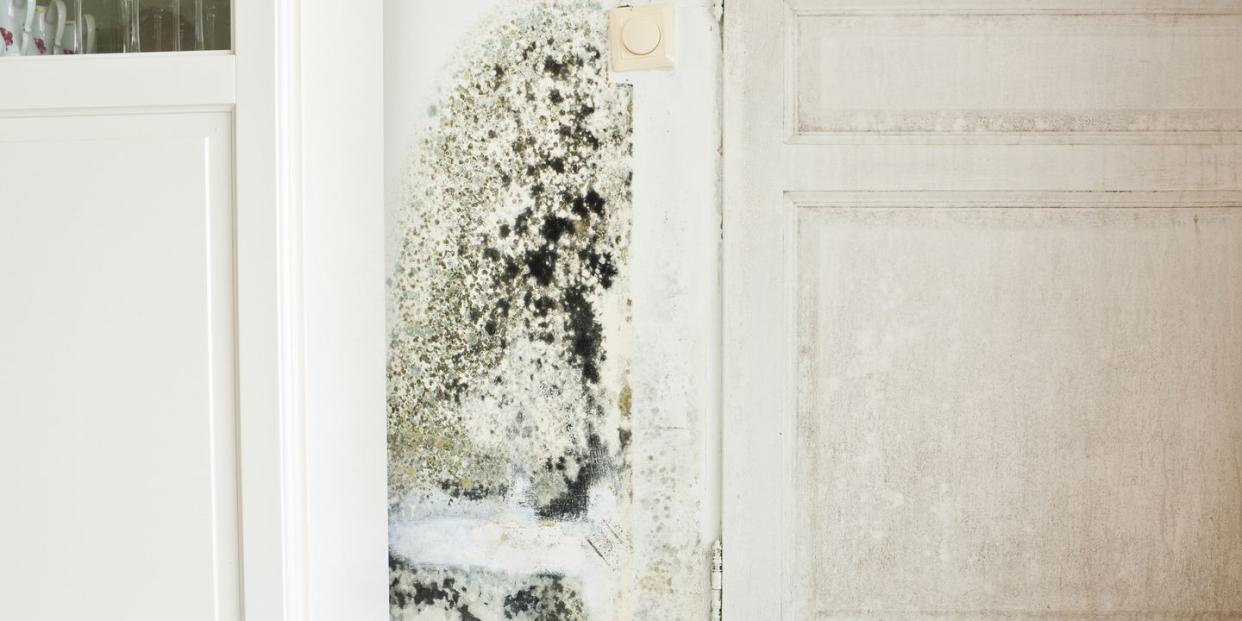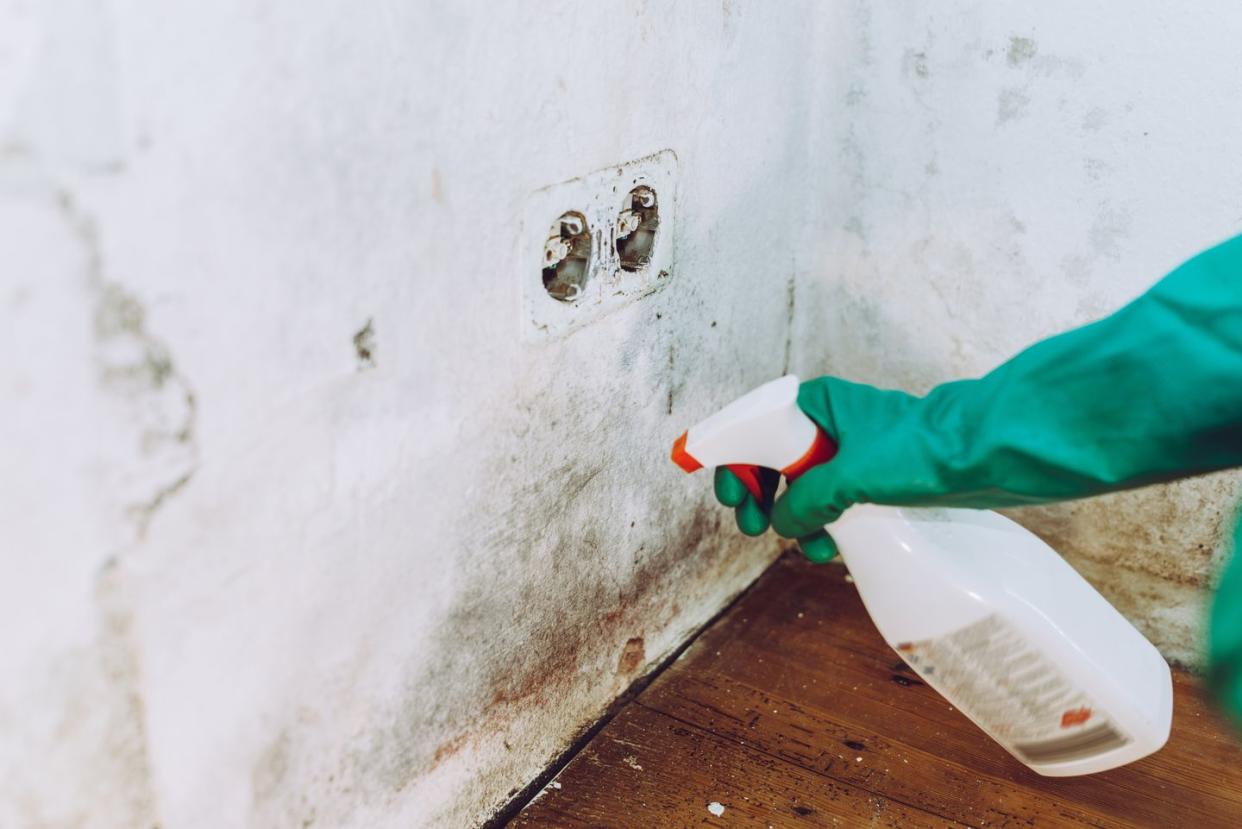What's the Difference Between Mildew and Mold?

You may have heard the terms mildew and mold used interchangeably, but they're not the same thing. Let us clear things up once and for all: While mold and mildew both are types of fungi that thrive in moist areas (and that you want to get rid of as fast as possible), mildew is actually a variety of mold. It isn't necessarily more harmful, but it does look different.
"The term mildew basically refers to mold growth that's light in color and powdery in texture," says Michael Rubino, a mold and air quality expert and the founder of HomeCleanse. "These mold colonies could be gray, white, or light green and grow in a flat format without much height, meaning they aren't as fluffy and spongelike as some other mold growth."
Other types of mold growth that aren't mildew can look like a black stain or show up as specks of black, white, orange, green, or brown.
In addition to being unsightly and causing your home to smell musty or stale, some molds can produce potentially toxic by-products called mycotoxins, according to the U.S. Environmental Protection Agency. More than 200 mycotoxins from common molds are known, but many more likely exist. Mold exposure can cause health problems with symptoms ranging from a stuffy nose, sore throat, cough, and burning eyes to a skin rash, and those allergic to it can have more severe reactions, according to the U.S. Centers for Disease Control and Prevention (CDC).

Mildew and other molds are actually very common in homes, per the CDC. And while prolific mold growth happens when there’s, say, a roof leak, it doesn't take major water damage to cause mold to materialize, says Signature Properties owner Doug Green, who remodels homes in Philadelphia. "Mold could occur if your pipe produces condensation within a wall cavity that is dark," says Green, who advises monitoring the areas around your water fixtures and keeping an eye out for leaky faucets. (If you see signs of a problem in your walls, that's when you should call a pro.) Everyday activities that make moisture—like taking steamy showers, hanging wet clothes on a rack, and even boiling water—can also encourage mold growth if you don't take the proper precautions. Mold can even thrive in your coffee maker, which is why it’s so important to clean it.
Whether it's mildew or mold, nobody wants it in their house. Read on to learn more about where mildew and mold grow and how to prevent your home from becoming a breeding ground for either one.
Where Does Mildew Grow?
Mildew grows in similar locations to other types of mold, but it especially likes places that stay wet, explains Rubino. Your bathroom is a favorite, but it's not the only hospitable spot in your house. You might find mildew on:
Shower curtains
Sinks
Faucets
Toothbrush holders
Windowsills and door frames
Kids' bath toys, bottles, and sippy cups
Appliances (especially washing machine doors and detergent compartments)
Houseplants
Makeup products
Where Do Both Mildew and Mold Grow?
Mildew and other types of mold like dark, dank, humid areas of your house. Basements are just the beginning—you can find mold in your kitchen cabinets and on rugs. Other areas to keep an eye on include:
Underneath sinks
Ceilings
Toilet tanks
Inside cabinets
Carpeting
Windowsills and doorframes
Appliances
Attic or basement
Crawl spaces (such as under an enclosed porch)
How to Prevent Mold and Mildew
Since all types of mold need moisture to thrive, keeping your home dry is a sure way to help prevent it from growing, says Rubino. He also suggests switching to botanical cleaners, maintaining an indoor humidity level of 35 to 50 percent, and investing in a HEPA vacuum cleaner to help capture mold and mildew spores. There are other things you can do every day to avoid mold and mildew growth:
Clean up spills and pooled water as soon as you notice it
Hang up wet items like bath mats and towels to dry
Avoid leaving wet clothes in the laundry
Separate the shower curtain and liner so that they can dry
Allow appliances to dry out after use (i.e., leave the washing machine or dishwasher door open after you finish unloading)
Fix leaks promptly
Crack the bathroom door and turn on the exhaust fan or open a window while showering to create airflow
Turn on the vent hood or open a window while cooking
Deep clean and dust often
Invest in air purifiers, particularly a whole-home purifier
Maintain the HVAC system
Fix any structural issues in the home to prevent leaks or flooding
The bottom line: Both mildew and mold may not be the same thing, but they're both unwelcome house guests. If you take the proper precautions, you can avoid them.
You Might Also Like
